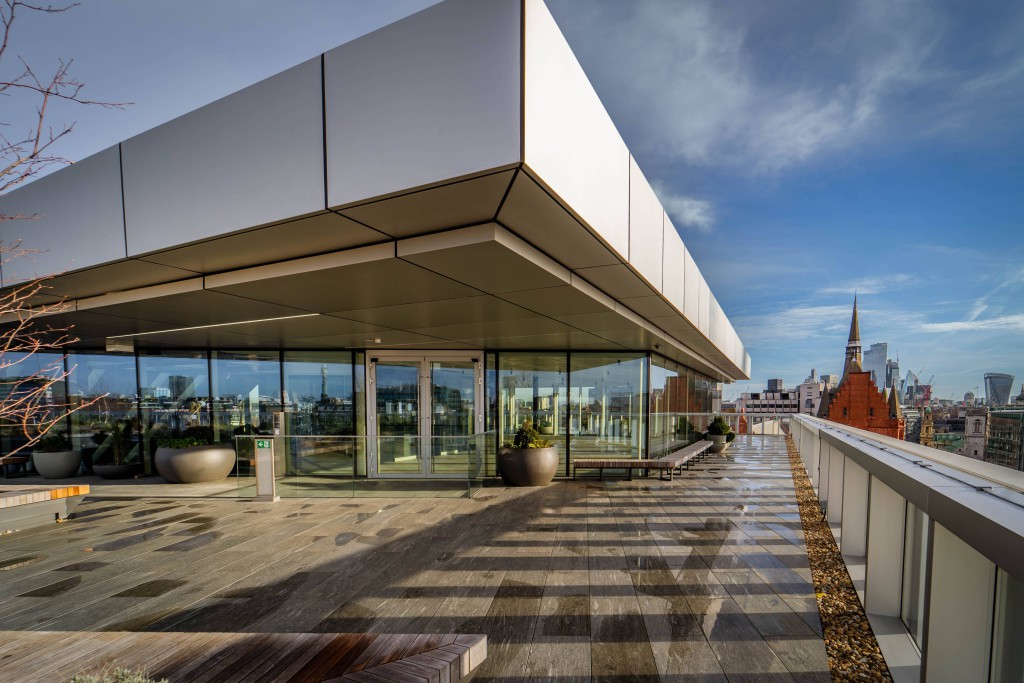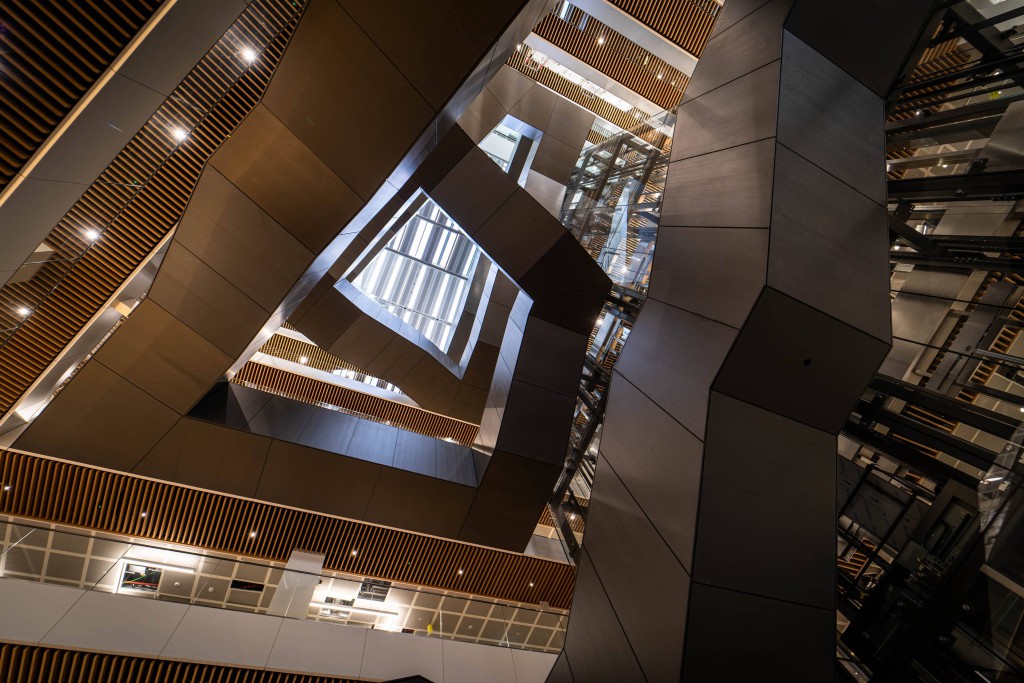Blueprint for the future

Smart technologies are reshaping the way buildings operate, enhancing efficiency, sustainability and occupant comfort. More importantly, they are playing a crucial role in fast-tracking the journey to Net Zero. Here, Kas Mohammed, VP of Digital Energy at Schneider Electric UK&I, discusses how intelligent buildings are driving this transformation.
Smart buildings are transforming the built environment, delivering efficiency gains that
significantly reduce carbon emissions. A prime example is Schneider Electric’s recent partnership with the Sidara Collective to make its headquarters in London more sustainable.
Built on Schneider Electric’s EcoStruxure IoT platform and a sophisticated network of over 650 sensors and controls, the system collects, analyses and manages more than 60,000 data points. Through analysis of real-time data drawn from these systems, the team was able to achieve a 22% reduction in operational energy use and carbon emissions – but more on this later.
It’s initiatives like this that are driving increased investment in smart technologies. Indeed, the building and construction industries – long perceived as slow to adapt – are on the cusp of a transformational leap. Smart devices are enhancing visibility into building operations, while digital twins – virtual replicas of buildings displaying real-time energy usage – are optimising both efficiency and sustainability. With the construction industry projected to grow at a 5.5% CAGR through 2029, integrating smart, efficient technology from the outset is no longer optional – it’s essential.
Smart building infrastructure is key to Net Zero
When we look at global emissions, buildings are among the world’s biggest polluters, accounting for around 35% of global carbon emissions. This stems from a broader systemic issue – many buildings, particularly older ones, were constructed before environmental considerations were a priority. While these structures require modernisation to reduce their impact, modern construction is moving in the right direction.
If we hope to reach Net Zero by 2050, the built environment sector must be a primary focus. Not only are they being part of all urban environments, with global populations continuing to grow – especially in cities – it’s crucial to embrace technologies that drive efficiencies now, before it’s too late.
So, what do we do? The core issue comes down to visibility: if building operators don’t know where they’re being wasteful, they can’t act. This is where new, smart technologies come in. Not only do they provide critical data analysis, powered by artificial intelligence (AI) and machine learning platforms, but this data improves over time, allowing for trial-and-error iteration to boost efficiency and power decarbonisation efforts. Bringing buildings into the light is vital in the fight for decarbonisation.
Now or never: Bringing buildings online
One of the best things we can do is make buildings smarter, particularly as we transition intoa technology-driven future. With technological advancement, smart buildings can seamlessly adapt to new innovations and evolving needs. Renewable energy will undoubtedly play a crucial role in this transformation. In the not-so-distant future, buildings will not only consume energy but will also be able to generate it, contributing to more resilient and sustainable urban energy systems. This ‘prosumer’ model enables buildings to produce energy and feed it back into the grid at optimal times.
Another major advantage of smart buildings is their ability to enhance the lives of occupants by improving health and boosting productivity. Particularly in the post-pandemic era, heightened concerns about air quality have placed greater emphasis on indoor safety, comfort and emissions.

Cloud based data intelligence plays a critical role in this shift. With 24/7 real-time monitoring, building operators gain deep insights into energy usage, space utilisation and occupant preferences – all remotely controllable. This data-driven approach helps reduce carbon footprints, improve operational efficiency and minimise energy costs.
Digital twins and AI pave the way to decarbonisation
Digital twins are a key part of the story. These digital replicas of buildings are created by gathering real-world information through 3D lasers, scanners, drones, sensors, cameras and other IoT devices. Often developed using specialised software, digital twins provide a comprehensive, real-time view of a building’s operations. Their true value lies in enabling proactive decision-making, reducing reliance on guesswork or fixed schedules.
Beyond operational efficiency, digital twins are transforming how building owners design and implement electrical infrastructure. By creating a virtual model of a building’s power system, they allow for precise simulation and optimisation before any physical work begins. They also support a ‘live digital twin’ approach, where real-time data continuously updates the model, ensuring adaptability and efficiency. This capability helps future-proof buildings, making it easier to integrate advancements such as electric vehicle (EV) charging stations and on-site renewable energy solutions.
In practice, digital twins empower building managers to fine-tune operations across an entire structure. Take the 150 Holborn case, where occupancy based controls automatically put rooms into standby mode when not in use, reducing unnecessary energy consumption. Smart technology can also be applied to environmental conditions – adjusting lighting, temperature and air quality in response to occupancy patterns and external factors. Additionally, AI-driven automation enhances efficiency by optimising asset performance and minimising energy waste, ultimately driving significant cost savings.
All this combined helps building managers to plan for future infrastructure additions such as EV charging points and on-site energy production.
The Net Zero future is now
150 Holborn is a prime example of the future of building management in action. This nine-storey, 18,500-square- meter (200,000-square-foot) project accommodates over 1,000 occupants and opened for use in early 2023. The sophisticated network of more than 650 sensors and controls are continuously collecting, analysing and managing more than 60,000 data points.
The impact of these smart systems has been remarkable. The team is optimising individual rooms to meet their efficiency needs. Meeting rooms, for instance, are set to a low-power state when unoccupied – reducing HVAC, lighting and plug loads – for 76% of business hours. As a result, energy consumption and carbon emissions dropped at the building dropped 22% on low-occupancy days over a four-week period. Despite these efficiency gains, indoor air quality remained within healthy limits, with CO2 levels, humidity and VOCs consistently maintained. The use of advanced sensors has delivered an expected payback period of around two years, with the potential for even quicker returns when factoring in additional HVAC components.
Indeed, smart buildings like 150 Holborn are the future – an essential step toward decarbonisation. As data, electrification and sustainability become increasingly critical, building operators will need smart, connected buildings sooner rather than later. Achieving this requires a seamless integration of multiple technologies working in tandem. The result? A better experience for occupants – and a positive impact beyond the building itself.







